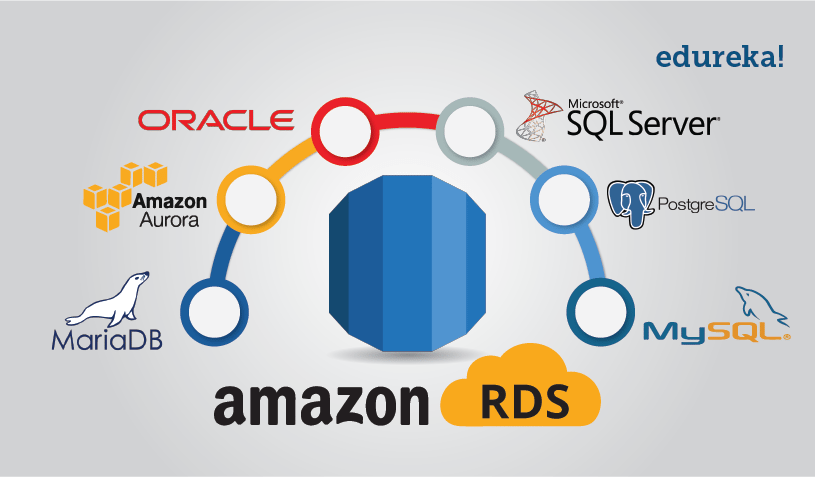AWS RDS Tutorial: Relational Database Service
Today in this RDS AWS Tutorial we shall be discussing in detail about Amazon’s Relational Database Management service RDS AWS and shall also do a hands-on, but first let us understand why it came into existence.
Back in old days, you’d have to setup a back end server, research and install various softwares to support your application, after all of these tiring tasks you would have started developing your application.
Well amazing is, sorry amazon is here, Amazon Web Services (AWS) offers a service called RDS AWS (Relational Database Service), which does all these tasks (i.e. setup, operate, update) for you automatically.
You just have to select the database that you want to launch, and with just one click you have a back end server at your service which will be managed automatically!
Let’s take an example here, suppose you start a small company.
You want to launch an application which will be backed by a MySQL database and since there is a lot of Database work, there are chances that the development work will fall behind.
Moving along in this RDS AWS Tutorial, let’s discuss the components of RDS.
RDS AWS Components:
- DB Instances
- Regions and Availability Zones
- Security Groups
- DB Parameter Groups
- DB Option Groups
- Let’s discuss each one of them in detail
DB Instances
They are the building blocks of RDS. It is an isolated database environment in the cloud, which can contain multiple user-created databases, and can be accessed using the same tools and applications that one uses with a stand-alone database instance.
A DB Instance can be created using the AWS Management Console , the Amazon RDS API, or the AWS Command line Interface .
The computation and memory capacity of a DB Instance depends on the DB Instance class. For each DB Instance you can select from 5GB to 6TB of associated storage capacity.
The DB Instances are of the following types:
- Standard Instances (m4,m3)
- Memory Optimised (r3)
- Micro Instances (t2)
Regions and Availability Zones
The AWS resources are housed in highly available data centers, which are located in different areas of the world. This “area” is called a region.
Each region has multiple Availability Zones (AZ), they are distinct locations which are engineered to be isolated from the failure of other AZs.
You can deploy your DB Instance in multiple AZ, this ensures a failover i.e. in case one AZ goes down, there is a second to switch over to. The failover instance is called a standby, and the original instance is called the primary instance.
Security Groups
A security group controls the access to a DB Instance. It does so by specifying a range of IP addresses or the EC2 instances that you want to give access.
Amazon RDS uses 3 types of Security Groups:
- VPC Security Group
- It controls the DB Instance that is inside a VPC.
- EC2 Security Group
- It controls access to an EC2 Instance and can be used with a DB Instance.
- DB Security Group
- It controls the DB Instance that is not in a VPC.
DB Parameter groups
- It contains the engine configuration values that can be applied to one or more DB Instances of the same instance type.
- If you don’t apply a DB Parameter group to your instance, you are assigned a default Parameter group which has the default values.
DB Option groups
- Some DB engines offer tools that simplify managing your databases.
- RDS makes these tools available with the use of Option groups.
Category: amazon web services, aws, devops, rds



0 comments